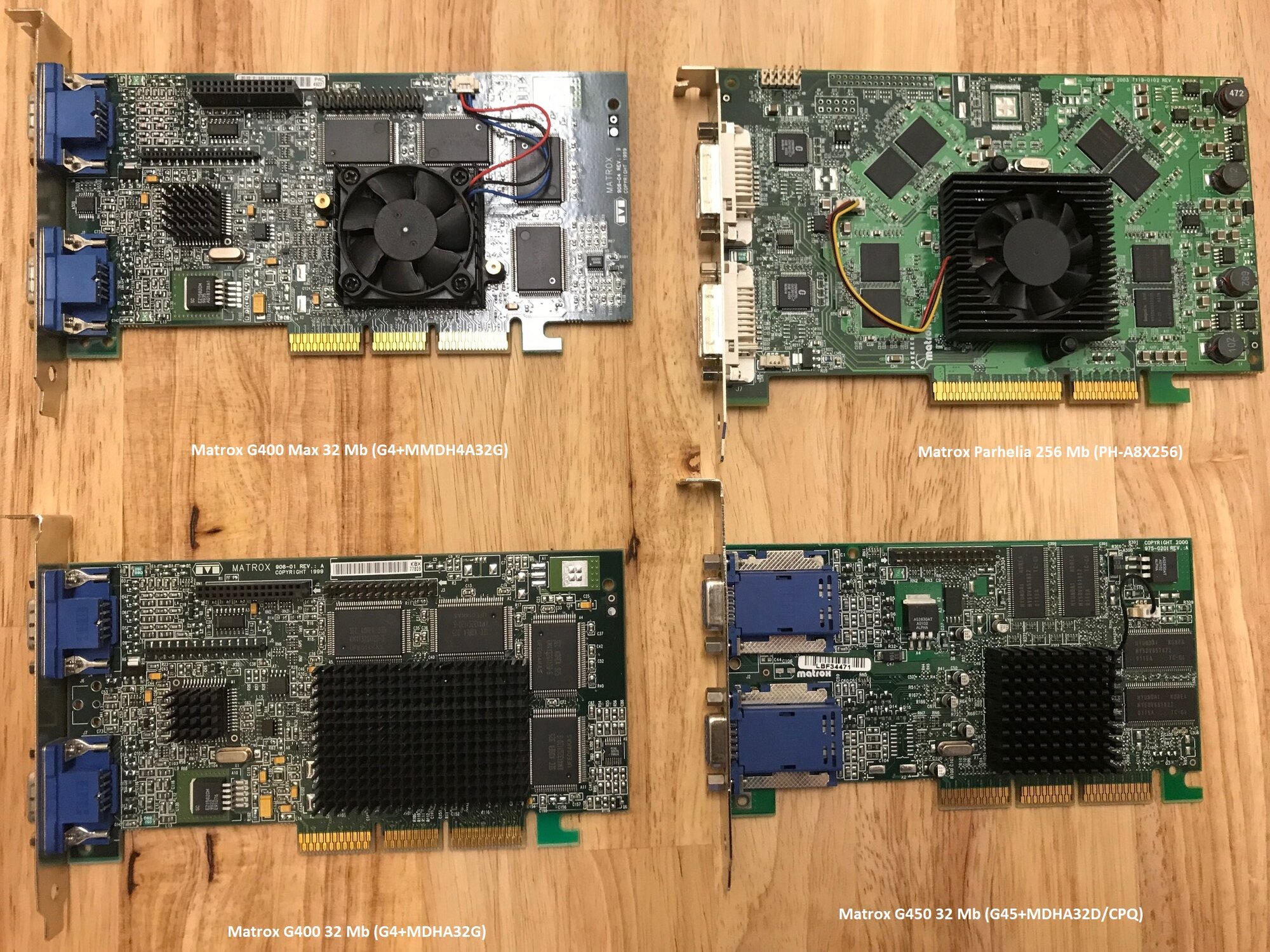I have four Matrox AGP cards for sale. These were working when pullled, but I have no way to test at this time. I take Paypal and shipping to the CONUS is included (not shipping outside of CONUS). Bare cards, no boxes or accessories.
$100 shipped

$100 shipped

Last edited:
![[H]ard|Forum](/styles/hardforum/xenforo/logo_dark.png)